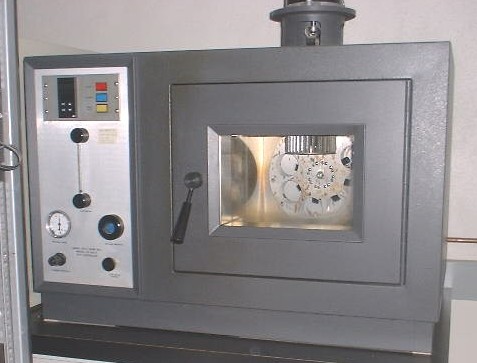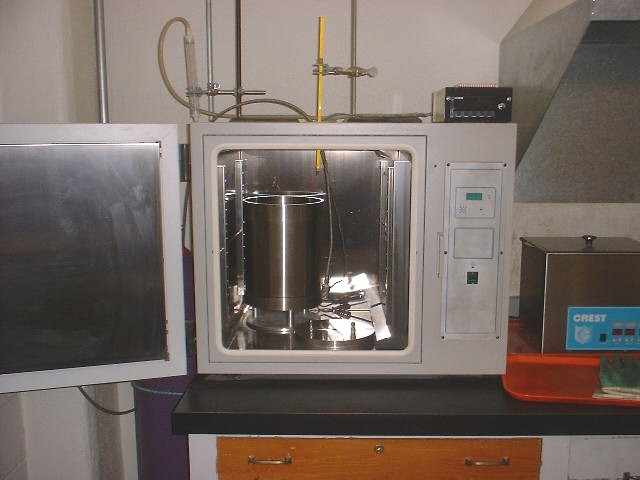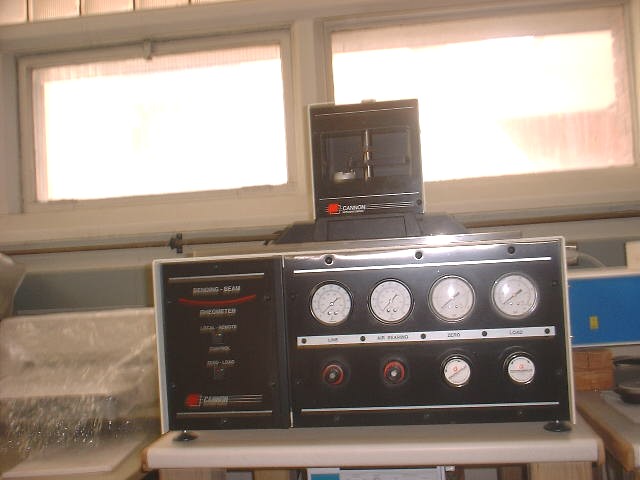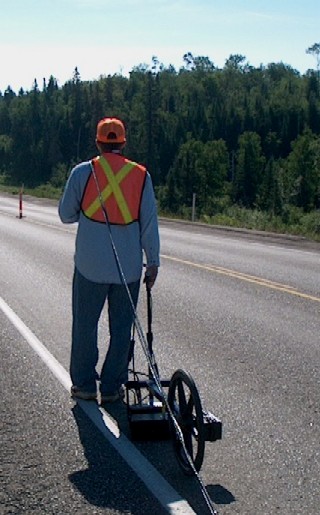The Pavements Laboratory
The
pavement
laboratory consists of binder characterization equipment
for the PG grading of binders and mix preparation and
testing equipment. In addition, the laboratory has a
number of general bench top tools and data recording
instruments.
The Rotational Viscometer (RV) evaluates
the viscosity of the binder at temperatures similar to those
commonly used during production to ensure the binder will .

The Dynamic Shear Rheometer (DSR) is used to evaluate the original and short term aged binder properties at the warmest expected pavement temperature. By changing the diameter of the specimen the same test method and equipment can be used to determine binder properties after long term aging and at intermediate in-service temperatures.

Short term binder aging is accomplished by
the Rolling
Thin
Film Oven (RTFO). The RTFO
simulates aging from hot mixing and construction. Glass jars
with 35 g of asphalt fit snuggly in the circular openings of
the rotating carriage. A hot jet of air is applied to the
samples for 85 min while the bottle tray is rotated to expose
binder surfaces to heat.

A Pressure Aging Vessel (PAV) treatment of the RTFO binder is used to further age the binder. This simulates long term aging in-service from 7 to 10 years.

The Bending Beam Rheometer (BBR) is used to measure the stiffness of asphalt cement. A simply supported beam is held at a constant temperature in a water bath. Deflection at the centre of the beam is measured under an applied constant load at the same location. The stiffness can then be calculated based on the deflection and geometry of the specimen.

The Gyratory Compactor is used to
determine the bulk specific gravity of an asphalt pavement
sample. The equipment applies a standard pressure on the loose
mix while gyrating the mold from side to side. The gyratory
compactor assists in selecting aggregate blends for asphalt
mixes that do not compact too easily and do not continue to
compact under traffic loading. The compactor is required for
the Superpave mix design method.

The Ground Penetrating Radar (GPR) is used to locate anomalies in the pavement structure such as voids, reinforcing steel, dowels, and layer thicknesses. Some photos from a field survey are located here.

